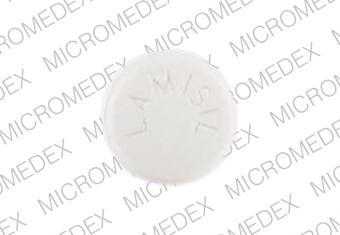Lamisil Disease Interactions
There are 6 disease interactions with Lamisil (terbinafine).
Terbinafine (applies to Lamisil) liver disease
Major Potential Hazard, High plausibility.
Oral terbinafine is not recommended for use in patients with chronic or active liver disease. Terbinafine may be hepatotoxic. Rare cases of cholestatic hepatitis and liver failure, some resulting in liver transplant or death, have been reported during treatment of various dermatologic conditions in patients with and without preexisting liver disease. Although a causal relationship has not been established, the severity of hepatic events and/or their outcome may be worse in patients with active or chronic liver disease.
References
- Lowe G, Green C, Jennings P "Hepatitis associated with terbinafine treatment." BMJ 306 (1993): 248
- Balfour JA, Faulds D "Terbinafine. A review of its pharmacodynamic and pharmacokinetic properties, and therapeutic potential in superficial mycoses [published erratum appears in Drugs 1992 May;43(5):699]." Drugs 43 (1992): 259-84
- "Product Information. Lamisil (terbinafine)." Sandoz Pharmaceuticals Corporation PROD (2001):
- Lazaros GA, Papatheodoridis GV, Delladetsima JK, Tassopoulos NC "Terbinafine-induced cholestatic liver disease." J Hepatol 24 (1996): 753-6
Terbinafine (applies to Lamisil) neutropenia
Major Potential Hazard, Low plausibility.
Isolated cases of severe neutropenia have been reported in patients administered oral terbinafine. A causal relationship has not been established, although the neutropenia resolved following discontinuation of terbinafine with or without supportive care. Therapy with terbinafine should be administered cautiously in patients with preexisting neutropenia. It may be appropriate to monitor blood counts more frequently during terbinafine therapy. If secondary infection occurs and the neutrophil count is <= 1000 cells/mm3, terbinafine should be discontinued and supportive management initiated.
References
- Kovacs MJ, Alshammari S, Guenther L, Bourcier M "Neutropenia and pancytopenia associated with oral terbinafine." J Am Acad Dermatol 31 (1994): 806
- "Product Information. Lamisil (terbinafine)." Sandoz Pharmaceuticals Corporation PROD (2001):
Terbinafine (applies to Lamisil) depression
Moderate Potential Hazard, Moderate plausibility.
Postmarketing studies have reported depressive symptoms with the use of terbinafine tablets. Terbinafine should be used with caution in patients with depression, and prescribers should be alert to the development of depressive symptoms. Patients and caregivers should be instructed to report any depressive symptoms.
References
- "Product Information. Lamisil (terbinafine)." Sandoz Pharmaceuticals Corporation PROD (2001):
Terbinafine (applies to Lamisil) immunosuppression
Moderate Potential Hazard, Moderate plausibility. Applicable conditions: Immunodeficiency
Transient decreases in absolute lymphocyte counts have been reported with oral terbinafine during clinical trials. The clinical significance of these decreases is unknown. Monitoring of complete blood counts may be appropriate in patients with known or suspected immunodeficiency receiving terbinafine for greater than six weeks.
References
- Kovacs MJ, Alshammari S, Guenther L, Bourcier M "Neutropenia and pancytopenia associated with oral terbinafine." J Am Acad Dermatol 31 (1994): 806
- "Product Information. Lamisil (terbinafine)." Sandoz Pharmaceuticals Corporation PROD (2001):
Terbinafine (applies to Lamisil) lupus
Moderate Potential Hazard, Moderate plausibility. Applicable conditions: Lupus Erythematosus
Precipitation and exacerbation of cutaneous and systemic lupus erythematosus has been reported postmarketing in patients taking terbinafine tablets. Terbinafine should be discontinued in patients with any clinical signs and symptoms suggestive of lupus erythematosus.
References
- "Product Information. Lamisil (terbinafine)." Sandoz Pharmaceuticals Corporation PROD (2001):
Terbinafine (applies to Lamisil) renal dysfunction
Moderate Potential Hazard, Moderate plausibility.
The use of oral terbinafine in patients with renal impairment (CrCl <= 50 mL/min) has not been adequately studied and is, therefore, not recommended. Terbinafine metabolites are primarily eliminated by the kidney. The clinical significance of possible metabolite accumulation due to decreased clearance is unknown.
References
- Jensen JC "Clinical pharmacokinetics of terbinafine (Lamisil)." Clin Exp Dermatol 14 (1989): 110-3
- "Product Information. Lamisil (terbinafine)." Sandoz Pharmaceuticals Corporation PROD (2001):
Lamisil drug interactions
There are 149 drug interactions with Lamisil (terbinafine).
Lamisil alcohol/food interactions
There is 1 alcohol/food interaction with Lamisil (terbinafine).
More about Lamisil (terbinafine)
- Lamisil consumer information
- Check interactions
- Compare alternatives
- Reviews (140)
- Drug images
- Side effects
- Dosage information
- During pregnancy
- Support group
- Drug class: miscellaneous antifungals
- Breastfeeding
Related treatment guides
Drug Interaction Classification
| Highly clinically significant. Avoid combinations; the risk of the interaction outweighs the benefit. | |
| Moderately clinically significant. Usually avoid combinations; use it only under special circumstances. | |
| Minimally clinically significant. Minimize risk; assess risk and consider an alternative drug, take steps to circumvent the interaction risk and/or institute a monitoring plan. | |
| No interaction information available. |
Further information
Always consult your healthcare provider to ensure the information displayed on this page applies to your personal circumstances.


